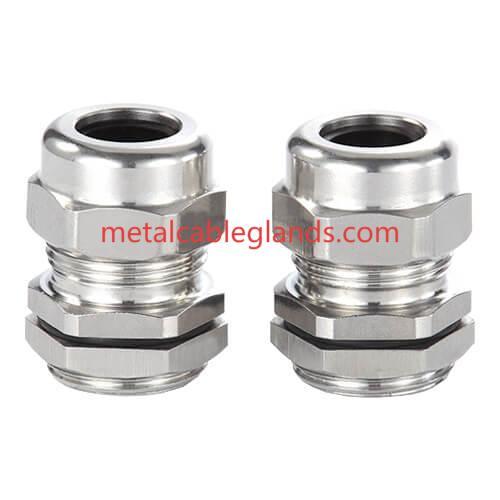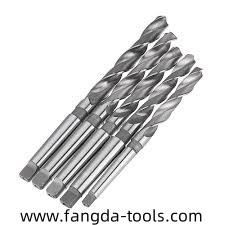HJSI Cable Gland Adaptor: Built for Performance

The efficiency and reliability of modern cable management systems depend heavily on how well components are engineered to withstand environmental stress and mechanical strain. In this regard, the Cable Gland Adaptor serves as a crucial interface element, designed to ensure perfect alignment, sealing integrity, and grounding continuity between cables and enclosures. Whether used in heavy machinery, telecommunications, or renewable energy systems, the adaptor’s design and material composition determine not only its mechanical strength but also its long-term performance in demanding industrial conditions.
A Cable Gland Adaptor may appear simple in structure, yet its engineering requires precise attention to dimensional tolerances and functional design. The most fundamental purpose of the adaptor is to reconcile mismatched thread types, but beyond that, it must also ensure a secure fit without compromising sealing or electrical continuity. This dual requirement has led to the development of specialized design elements such as stepped thread profiles, integrated sealing grooves, and internal grounding contacts. Each of these components plays a specific role in achieving stability and EMI protection.
From a design standpoint, adaptors are often divided into three major categories: mechanical interface adaptors, sealing adaptors, and grounding adaptors. Mechanical adaptors focus on thread compatibility—enabling connections between metric, PG, NPT, or other threading systems—while sealing adaptors introduce enhanced environmental protection through O-rings or compression seals. Grounding adaptors, on the other hand, are designed to maintain low-resistance electrical continuity across metal surfaces, providing effective EMI suppression and compliance with safety standards.
Material selection is one of the most critical engineering decisions in adaptor manufacturing. Zhejiang Hongjue S Connector employs high-grade materials such as nickel-plated brass, stainless steel, and engineering plastics, each chosen for specific operational requirements. Nickel-plated brass offers a balance between corrosion resistance and electrical conductivity, making it suitable for most indoor and outdoor applications. Stainless steel, particularly grades 304 and 316, is ideal for harsh or corrosive environments such as marine and chemical facilities, where longevity and mechanical strength are essential. For lightweight or non-conductive systems, glass-filled nylon adaptors provide durability without adding significant weight, and they also prevent galvanic corrosion between dissimilar metals.
The machining process is equally vital in determining the adaptor’s precision and reliability. Zhejiang Hongjue S Connector utilizes CNC machining and automated thread inspection systems to maintain consistent thread accuracy and surface smoothness. This precision minimizes cross-threading and ensures uniform torque distribution during installation. Surface treatments, such as nickel plating or passivation, further enhance corrosion protection and aesthetic appearance while maintaining electrical conductivity.
Another important design consideration is the sealing structure. A well-engineered adaptor incorporates multiple sealing layers to maintain IP66 or IP68 ratings, preventing dust and moisture ingress even in high-vibration environments. Silicone or EPDM O-rings are commonly used for high temperature and chemical resistance, while fluorosilicone seals are preferred for extreme temperature variations. These design refinements allow adaptors to perform reliably in power plants, offshore wind installations, and transportation systems where temperature, humidity, and pressure changes are frequent.
Thermal performance and vibration resistance also influence adaptor design. Differential expansion between metals can lead to seal deformation or thread loosening over time. To address this, HJSI engineers use precise material pairing and anti-vibration thread designs to preserve structural integrity. Adaptors may also include locknuts or retaining rings for additional stability under constant motion or heavy mechanical loads. These features make them particularly effective in automation lines, where cables are frequently subjected to mechanical flexing.
Each of these design choices directly affects operational efficiency and equipment lifespan. By balancing material properties, dimensional precision, and surface protection, adaptors provide both structural and functional advantages. As industries transition toward higher automation and increased environmental awareness, there is growing demand for connection solutions that combine mechanical adaptability with energy efficiency and long-term durability.
Zhejiang Hongjue S Connector continues to refine adaptor design through research and advanced manufacturing technology. Their products are developed according to international standards such as EN 62444, ensuring compatibility and reliability across different equipment platforms. The company’s engineering expertise allows customers to select the ideal adaptor type and material combination for any application—whether it’s an offshore wind farm, industrial control panel, or data center infrastructure.To explore Zhejiang Hongjue S Connector’s full range of high-performance adaptors and related solutions, please visit https://www.metalcableglands.com/product/ .




